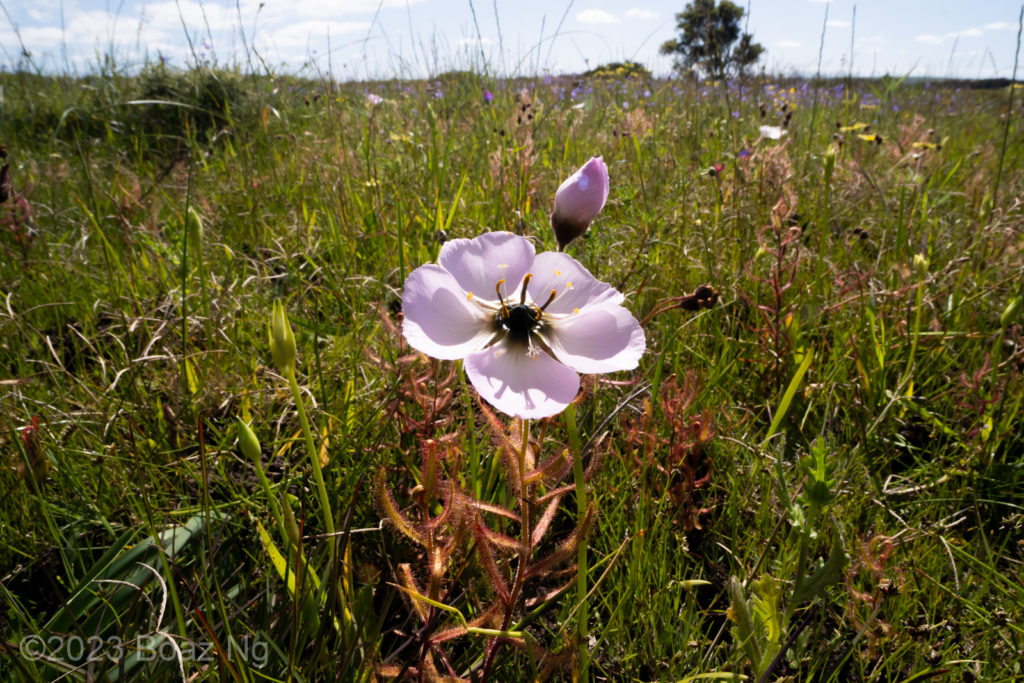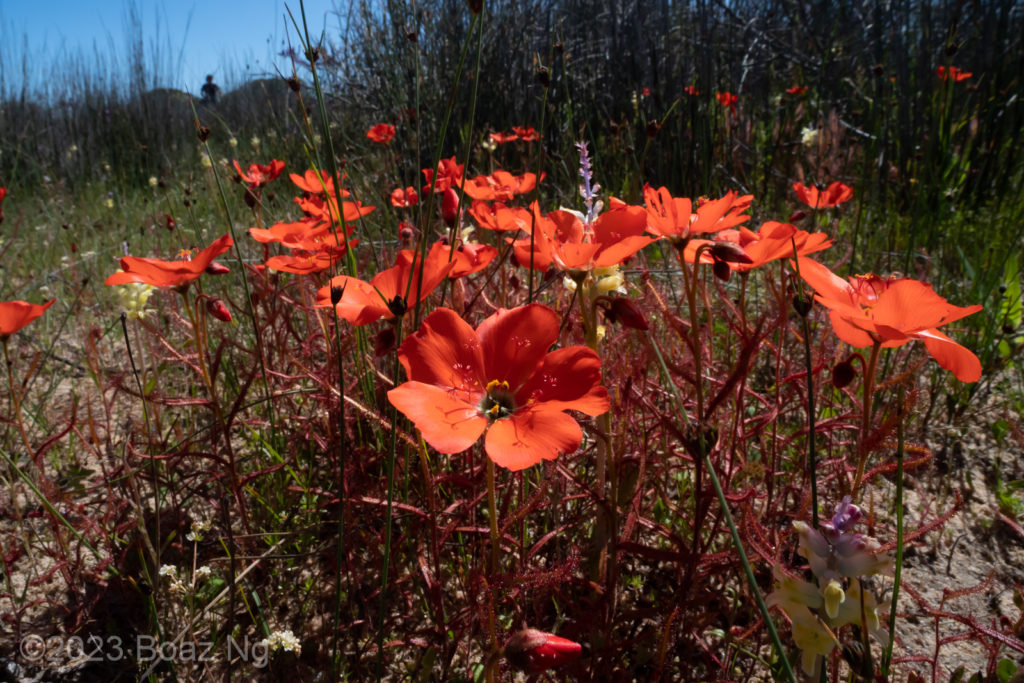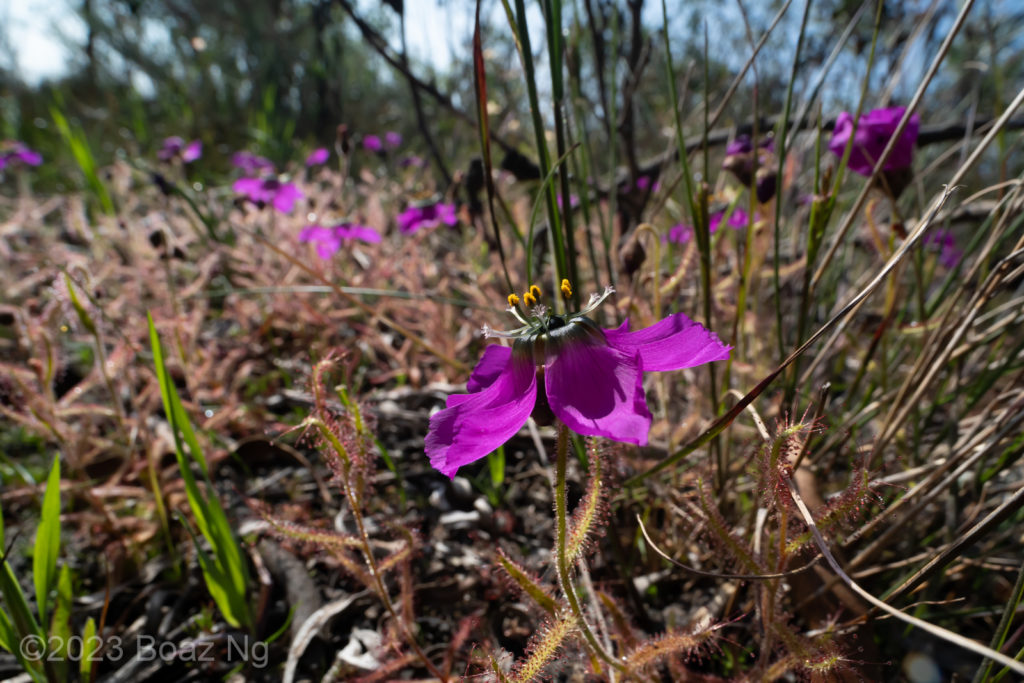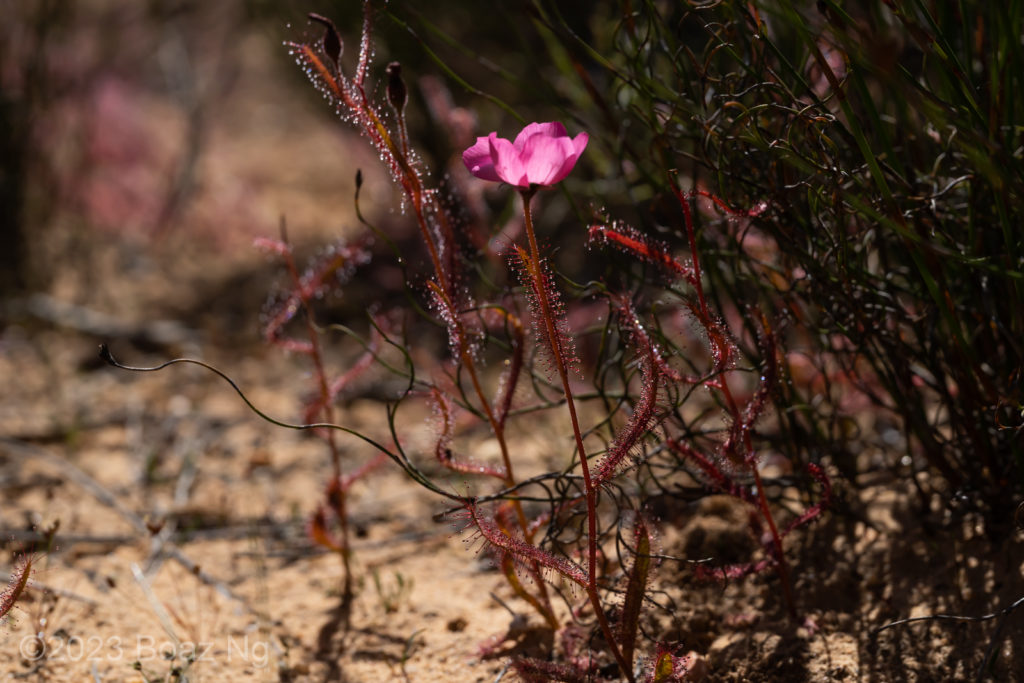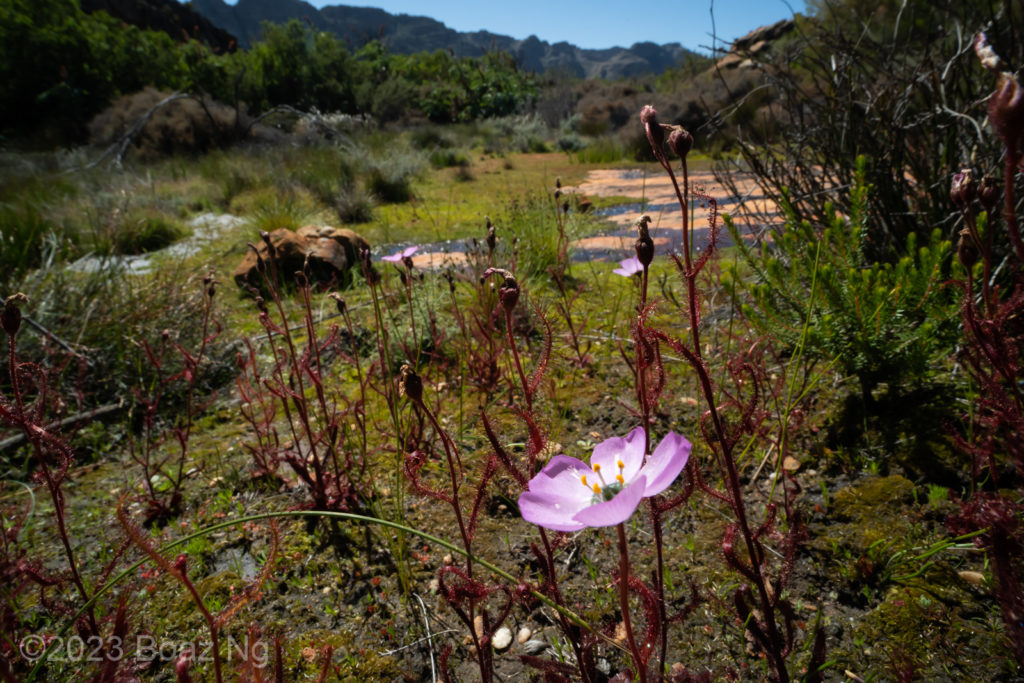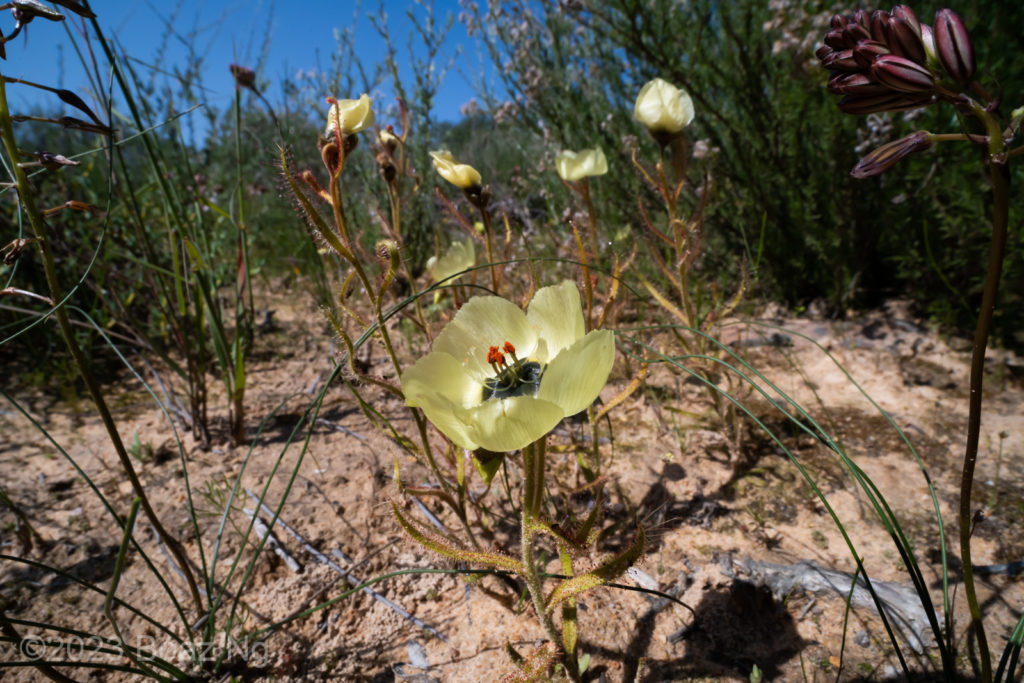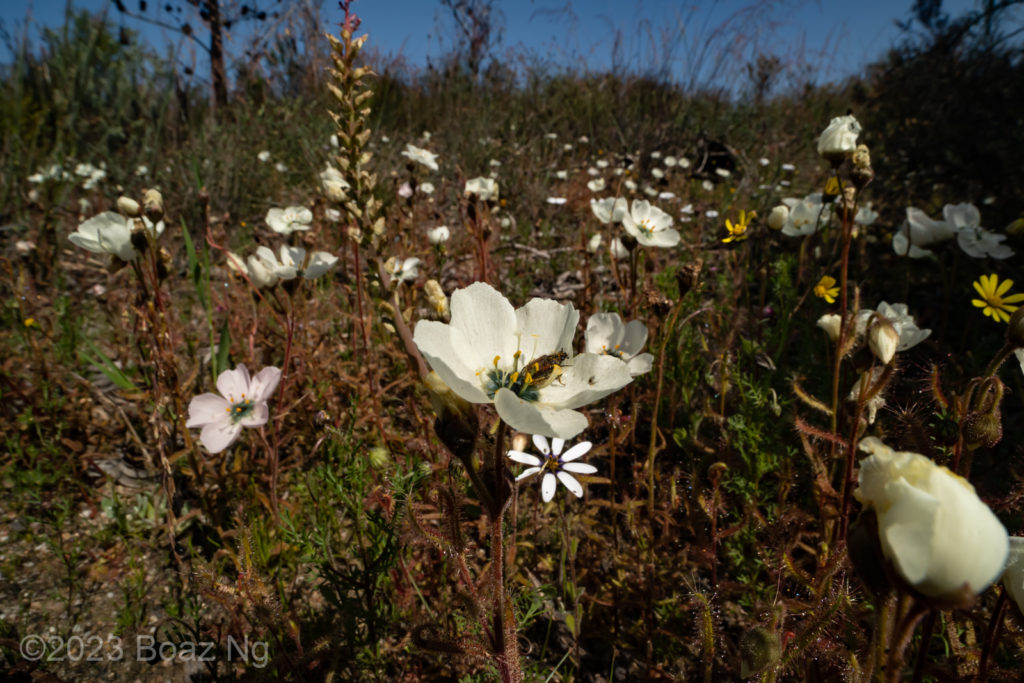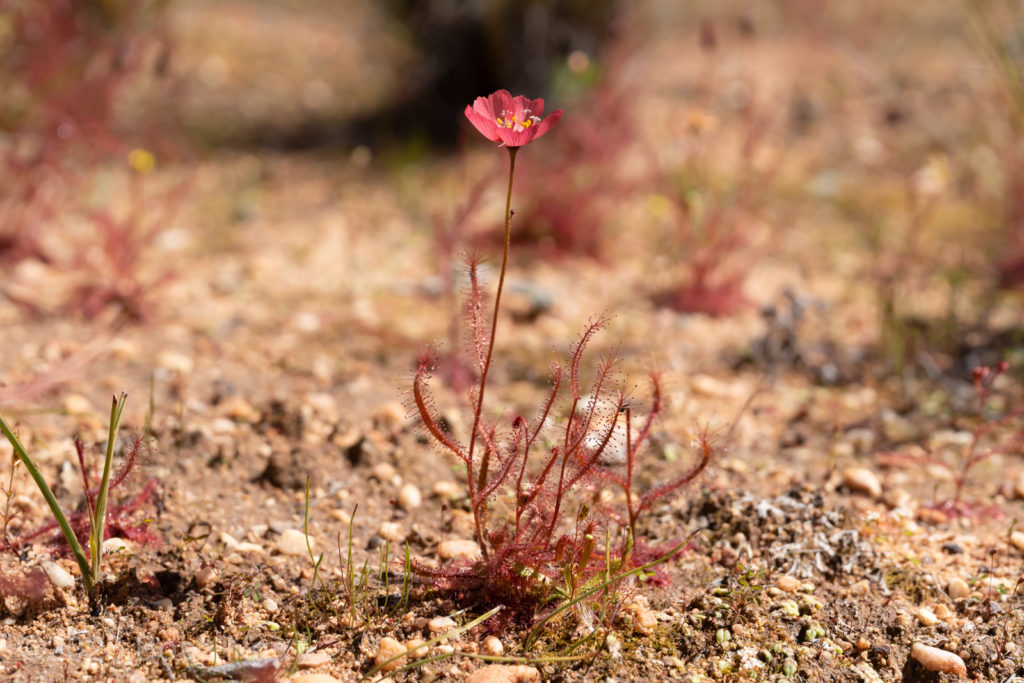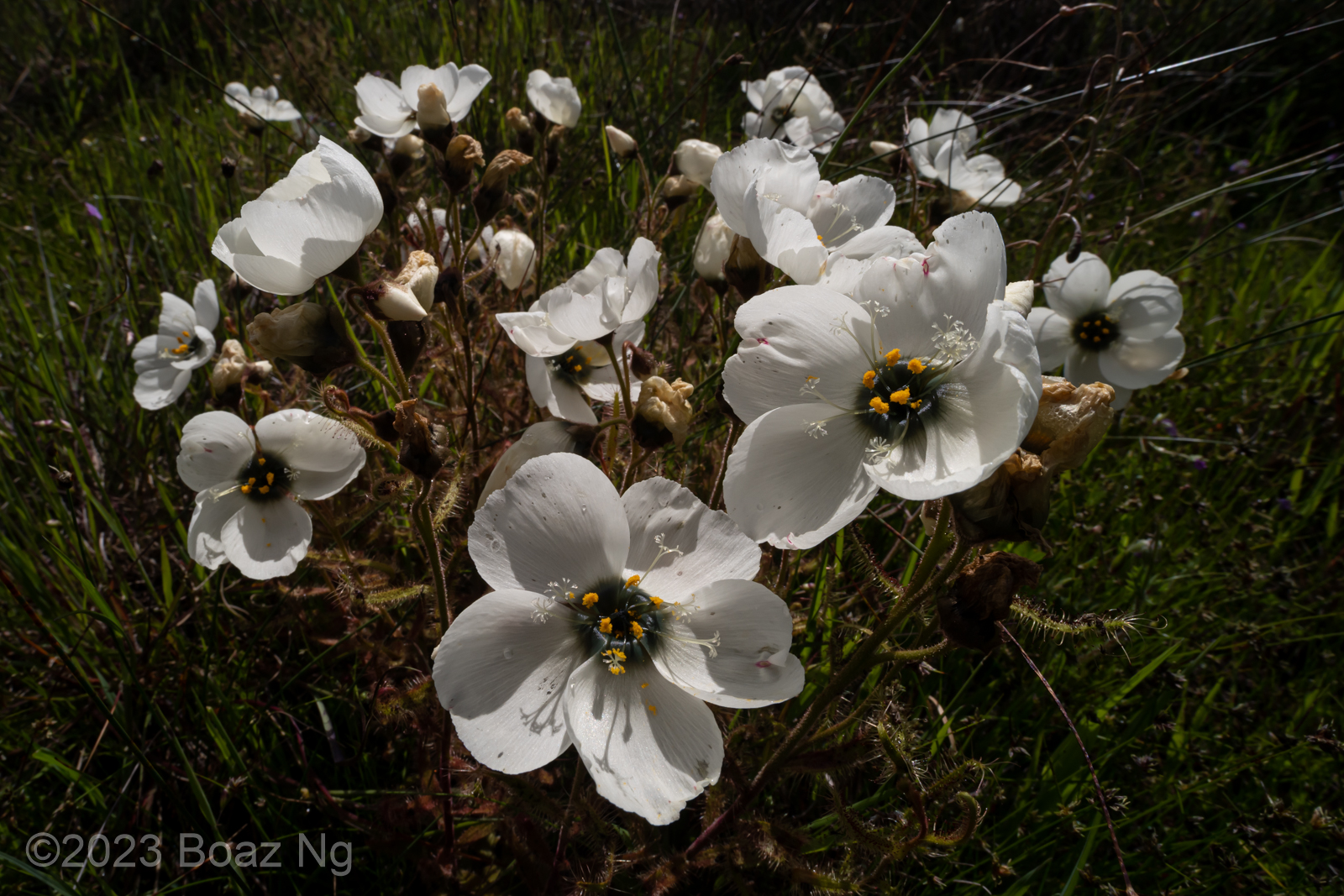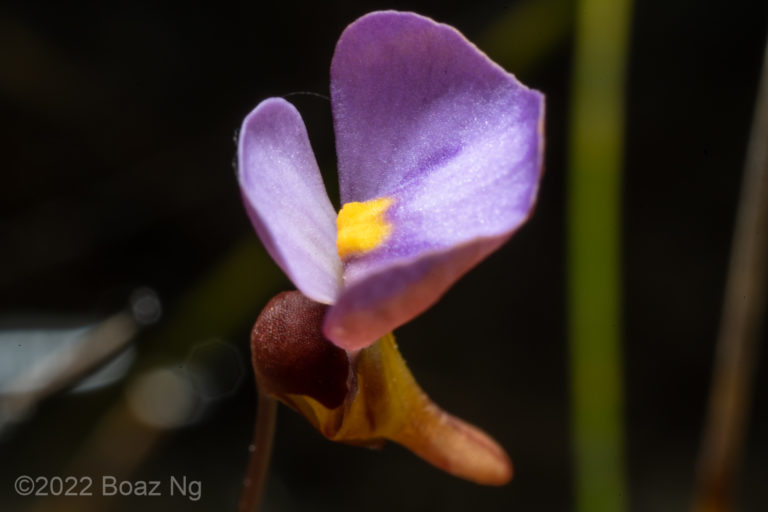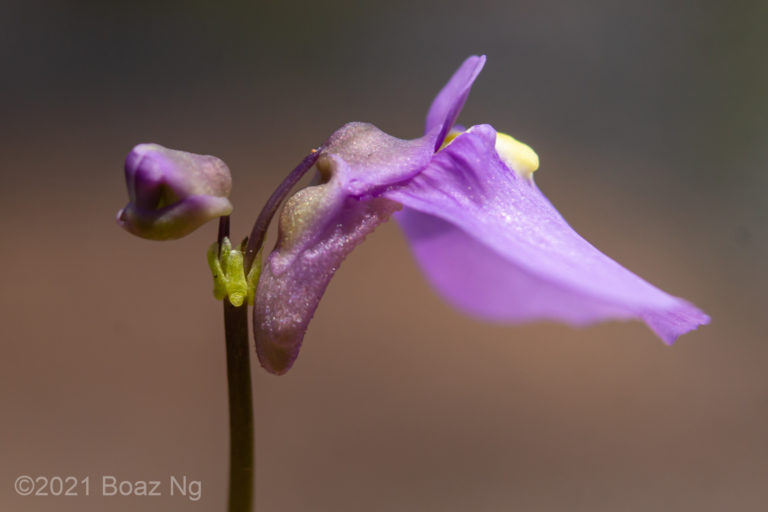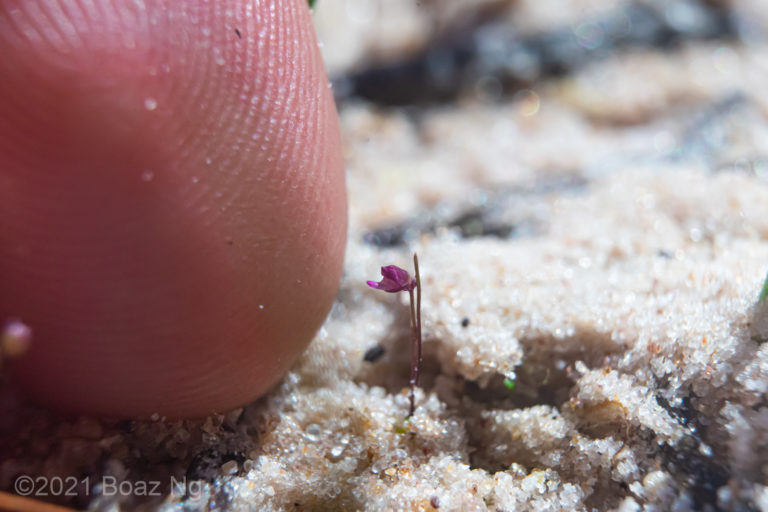Drosera cistiflora is a South African sundew that is known for its especially large flowers. The species is named the resemblance of its blooms to Cistus rockroses.
Drosera cistiflora has a somewhat variable morphology across its range. The standard plant has a basal rosette of flat to semi-raised leaves from which an erect stem emerges. Thin, upwards-reflexed leaves grow out of the erect stem. Depending on the form, the stem reaches around 10 – 40 cm in height. The stem terminates in a bloom that is can be coloured in shades of white, pink, red, purple and yellow. The flowers are particularly large for the genus, reaching around 3-5 cm in diameter.
The species is commonly observed in the Western Cape region of South Africa, extending into adjacent areas of the Northern Cape. It grows in diverse habitats mainly in renosterveld habitat but occasionally in fynbos. Suitable habitats include natural meadows, alluvial deposits by streams, wet sandplains and seepages in hilly terrain. The species is winter-growing and dies back to a dormant root during the dry summer months.
Drosera cistiflora is part of a complex of closely related plants united by similar floral and vegetative morphologies. It is most similar to Drosera variegata, and differs in that its erect stem is generally longer with more leaves (D. variegata usually has 2-3 leaves on the erect stem).
